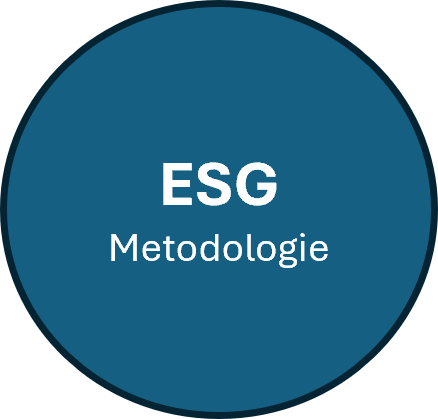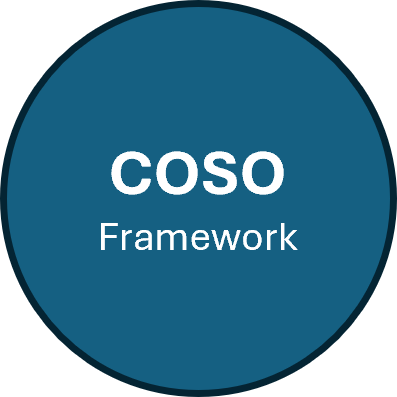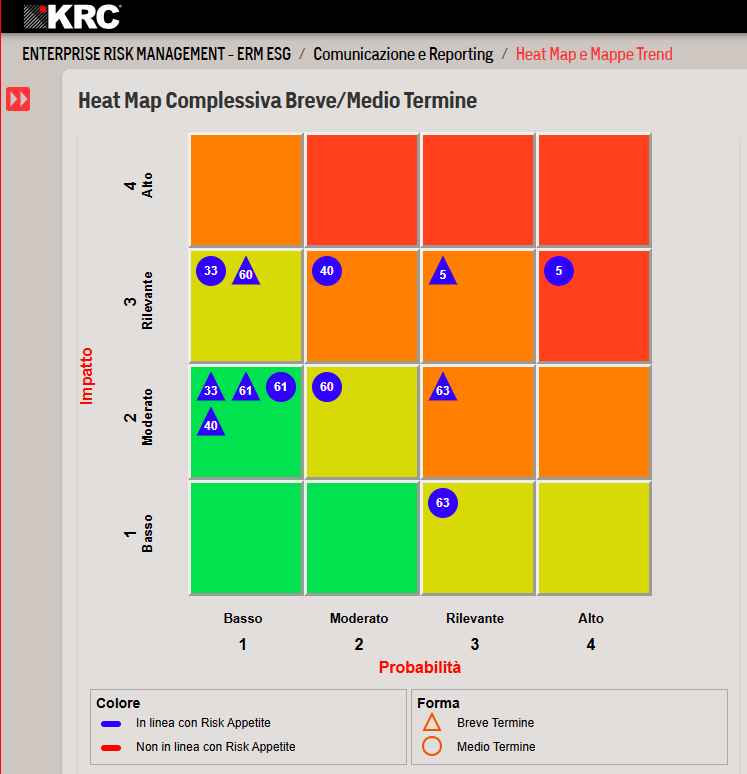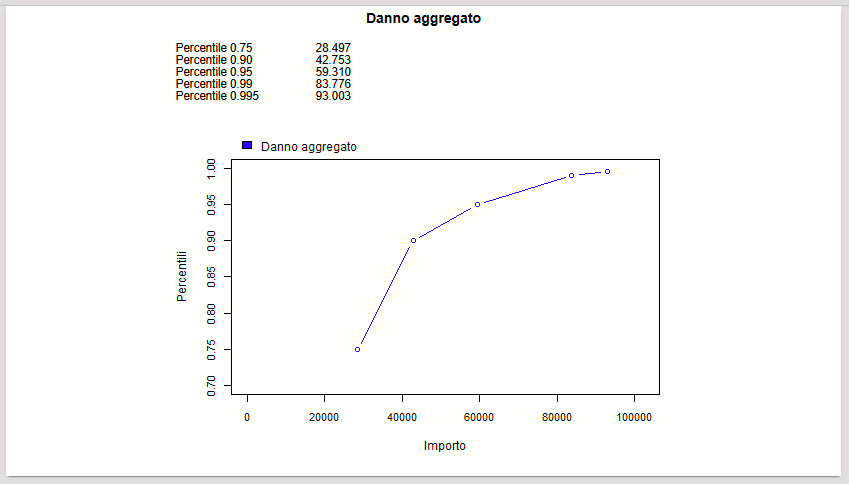DEFINIZIONE E ANALISI DEL CONTESTO
Consente la configurazione del contesto interno, di quello esterno e di quello specifico relativo al sistema di gestione dei rischi ERM-ESG.
DEFINIZIONE DEL MODELLO DI RISCHIO
Il Modello dei Rischi è definibile in modo flessibile e secondo una struttura ad albero (famiglia, macro-area, area e rischio). Al rischio, già in fase di definizione, possono essere associati diversi attributi tra cui quello di essere classificabile come ESG.
OBIETTIVI DI BUSINESS E SOSTENIBILITA'
Consente di gestire l'intero ciclo di gestione degli obiettivi di business e di sostenibilità, dalla definizione del programma, all'analisi di fattibilità del singolo obiettivo, fino all’assegnazione e gestione delle attività.
METODOLOGIE E CRITERI
Consente di selezionare da una libreria di metodologie e criteri, i parametri che consentono la determinazione dei livelli e relative classi di rischio, le tipologie di valutazione Qualitativa e/o Quantitativa e i livelli di accettabilità del rischio (Risk Tollerance).




IDENTIFICAZIONE, ANALISI E VALUTAZIONE DEI RISCHI
La fase di Identificazione del Rischio consiste nel raccogliere in modo sistematizzato e attraverso un’apposita scheda di rischio tutti i dettagli dell’evento e delle mitigazioni attualmente in corso.
TRATTAMENTO
La fase di Trattamento consente di attivare la Strategia di Trattamento (anche a fini assicurativi) e i relativi piani con allocazione delle responsabilità. Il Risk Manager potrà seguire tutti gli stati di avanzamento attraverso apposite dashboard presenti nella sua home page.
INDICATORI
In KRC® è possibile configurare e gestire indicatori da utilizzare nella fase di monitoraggio. Tali indicatori possono essere personalizzati, associati al Risk Appetite aziendale, e consultati online attraverso appositi cruscotti o nell’apposita reportistica.
COMUNICAZIONE E REPORTING
In KRC® è possibile generare e gestire report contenenti le informazioni più significative (definibili a priori) a seguito della valutazione dei rischi. I vari report generati nel tempo sono consultabili accendendo ad un apposito pannello di controllo.
I VANTAGGI DELLA DIGITALIZZAZIONE DEL MODULO ERM-ESG
In KRC® l’integrazione del Modulo ERM-ESG è nativa con:
- i moduli dei sistemi di gestione ISO fornisce una visione sintetica delle principali risultanze che emergono dalla gestione dei rischi e in questo modo il sistema verticale dei rischi diventa trasversale;
- il modulo Strategia e Reporting di Sostenibilità consente di rispondere ai requisiti degli ESRS sulla Doppia Materialità fornendo la valutazione de i rischi e delle opportunità legati ai fattori ESG e quindi di comprendere l’impatto sulla performance finanziaria dell’impresa.
Leggi l'articolo L'importanza di ERM-ESG per una maggiore Sostenibilità aziendale


